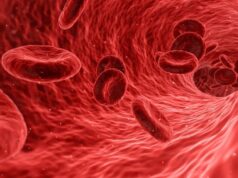
A new analysis of data from the CHAMPION PHOENIX (Cangrelor versus standard therapy to achieve optimal management of platelet inhibition) trial, published in the Journal of the American College of Cardiology and presented as a poster at the 2016 European Society of Cardiology (ESC) congress (27–31 August, Rome, Italy), indicates that patients with ST-segment elevation myocardial infarction (STEMI) who present during “off” hours (ie outside normal working hours) do not have worse outcomes than patients who present during “on” hours. These findings are in contrast to those of several previous analyses.
Senthil Selvaraj (Brigham and Women’s Hospital Heart & Vascular Center and Harvard Medical School, Boston, USA) and others report that several analyses have already demonstrated worse outcomes for STEMI patients presenting during “off hours” compared with those who present during workday hours. However, they note that little data are available from prospective randomised trials and “there continues to be debate regarding whether this effect exists in the contemporary era”. Therefore, the authors reviewed data for STEMI patients from the CHAMPION PHOENIX trial to determine if “such differences existed in a large, contemporary, international trial”.
The primary efficacy outcome of their analysis was a combined endpoint of all-cause death, myocardial infarction, stent thrombosis, or ischaemia-driven revascularisation at 48 hours while the primary safety outcome was the global use of strategies to open occluded arteries (GUSTO)-defined moderate or severe bleeding. “Off-hour percutaneous coronary intervention (PCI) was defined by intervention performed during weekdays from 7pm to 7am, weekends, and [public] holidays,” Selvaraj et al report.
Of the overall CHAMPION PHOENIX patient population (10,942), 1,992 patients had STEMI—mean age was 61±12, 26% were female, and 79% underwent PCI with the transfemoral approach. The authors state that neither the rate of the primary efficacy outcome (p=0.67) nor the rate of primary safety outcome (p=0.22) were significantly higher in the off-hours group. There were also no significant differences in the rate of stent thrombosis between groups (p=0.15 for the comparison) and cangrelor (Kangreal, The Medicines Company)—the drug evaluated in CHAMPION PHOENIX—was found to benefit both off and on hours patients.
According to Selvaraj et al, the findings of this analysis are “reassuring” and “suggest that outcomes for STEMI revascularisation are not dependent upon time of presentation”. They conclude: “Previous hazards identified with off-hours presentation in STEMI were not seen in a large, international contemporary trial with prospective data collection and adjudication of efficacy outcomes. Such data are reassuring and may reflect global quality improvement measures in STEMI care.”
Interview with Deepak Bhatt
In this interview, study author Deepak Bhatt (Brigham and Women’s Hospital Heart & Vascular Center and Harvard Medical School, Boston, USA) talks to Cardiovascular News about the results of this analysis.
How applicable are the data to real-life practice given the off-hours care in your analysis, as it was part of a randomised control trial, may have been of a higher standard than might been seen in real-life clinical practice?
The data reflect outcomes in high-volume PCI centres from around the world. Therefore, the results should not be extrapolated to smaller centres
Why do you think you found that off-hours care did not appear affect outcomes whereas previous studies did find off-hours care did affect outcomes?
It is likely that quality improvement efforts, such as those sponsored by the American College of Cardiology and American Heart Association, have led to faster times to treatment for primary PCI of STEMI. The resulting healthcare systems level improvements then manifest both on hours and off hours.
How can we ensure that off-hours care is of the same quality as that provided during on hours?
I think this can be quite challenging on medical and surgical services. A number of analyses show that care is not as good “off hours” though in our analysis it did appear to be. I believe care is similarly good “on hours” and “off hours” for primary PCI for STEMI in a high-volume centre. I do not know if the results would have been true at low-volume centres or for other disease states in which care is not as protocolised as with contemporary STEMI care. The key is probably having treatment pathways that are well established and well validated, as is the case for patients presenting with STEMI—the vast majority of whom should go on for primary PCI.













